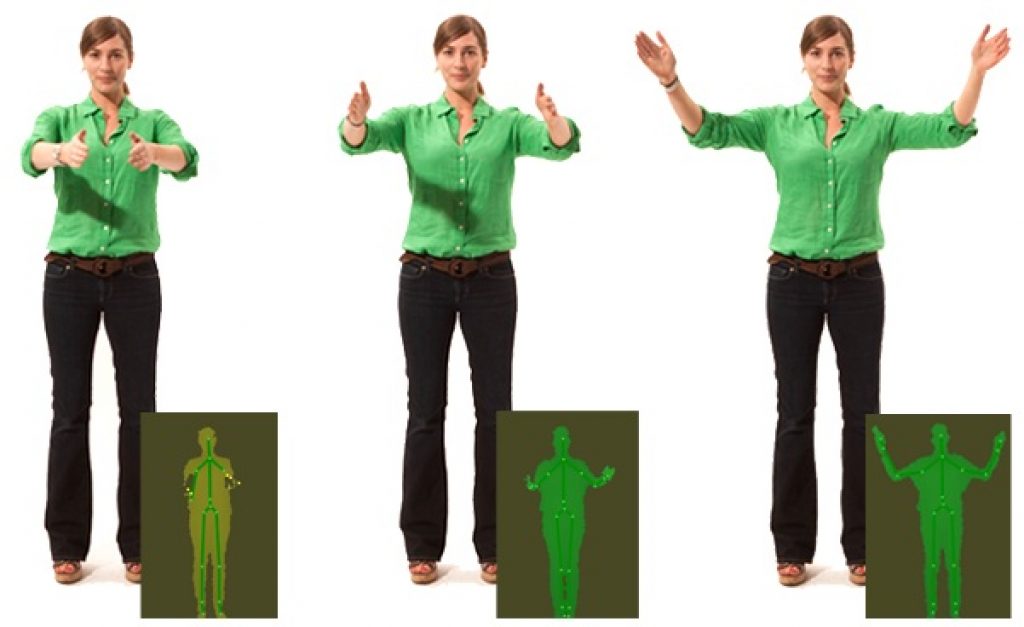It seems like just last week that I was mentioning, in a Kinect-themed introductory letter to the Embedded Vision Insights newsletter, that version 1.5 of the Kinect for Windows SDK was queued up for release by month end. Actually, it was just last week. And although Microsoft's late-March blog post announcing the news had indicated the SDK would "be available at the end of May," it seems that the company was previously padding its schedule, because it was released today. From the announcement:
We have added more capabilities to help developers build amazing applications, including:
- Kinect Studio, our new tool which allows developers to record and play back Kinect data, dramatically shortening and simplifying the development lifecycle of a Kinect application. Now a developer writing a Kinect for Windows application can record clips of users in the application’s target environment and then replay those clips at a later time for testing and further development.
- A set of Human Interface Guidelines (HIG) to guide developers on best practices for the creation of Natural User Interfaces using Kinect.
- The Face Tracking SDK, which provides a real-time 3D mesh of facial features—tracking the head position, location of eyebrows, shape of the mouth, etc.
- Significant sample code additions and improvements. There are many new samples in both C++ and C#, plus a “Basics” series of samples with language coverage in C++, C#, and Visual Basic.
- SDK documentation improvements, including new resources as well as migration of documentation to MSDN for easier discoverability and real-time updates.
We have continued to expand and improve our skeletal tracking capabilities in this release:
- Seated Skeletal Tracking is now available. This tracks a 10-joint head/shoulders/arms skeleton, ignoring the leg and hip joints. It is not restricted to seated positions; it also tracks head/shoulders/arms when a person is standing. This makes it possible to create applications that are optimized for seated scenarios (such as office work with productivity software or interacting with 3D data) or standing scenarios in which the lower body isn’t visible to the sensor (such as interacting with a kiosk or when navigating through MRI data in an operating room).
- Skeletal Tracking is supported in Near Mode, including both Default and Seated tracking modes. This allows businesses and developers to create applications that track skeletal movement at closer proximity, like when the end user is sitting at a desk or needs to stand close to an interactive display.
We have made performance and data quality enhancements, which improve the experience of all Kinect for Windows applications using the RGB camera or needing RGB and depth data to be mapped together (“green screen” applications are a common example):
- Performance for the mapping of a depth frame to a color frame has been significantly improved, with an average speed increase of 5x.
- Depth and color frames will now be kept in sync with each other. The Kinect for Windows runtime continuously monitors the depth and color streams and corrects any drift.
- RGB Image quality has been improved in the RGB 640×480 @30fps and YUV 640×480 @15fps video modes. The image quality is now sharper and more color-accurate in high and low lighting conditions.
New capabilities to enable avatar animation scenarios, which makes it easier for developers to build applications that control a 3D avatar, such as Kinect Sports.
- Kinect for Windows skeletal tracking is supported in near mode, including both default and seated tracking modesKinect for Windows runtime provides Joint Orientation information for the skeletons tracked by the Skeletal Tracking pipeline.
- The Joint Orientation is provided in two forms: A Hierarchical Rotation based on a bone relationship defined on the Skeletal Tracking joint structure, and an Absolute Orientation in Kinect camera coordinates.
For more KInect for Windows updates, including its availability in 15 more countries next month (for 31 total), along with speech recognition support for four more languages and five regional dialects, see Microsoft's latest blog post.


